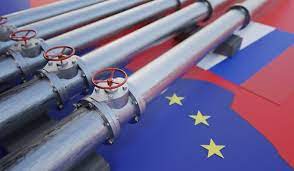The main factor driving up prices is the supply problems associated with the conflict between Russia and Ukraine.
The average price of petrol rose momentarily to more than € 2 per liter as the conflict escalated in February, but the latest rise is part of a steady rise in prices amid a shortage of supply and a shortage of summer travel months.
Another big factor is the exchange rate between the euro and the dollar. International trade in oil and gasoline is priced in U.S. dollars, which means that the recent weakening of the euro against the U.S. currency has raised pricing in euros.
A year ago, the average price of petrol per liter in the eurozone was € 1.30 and at the beginning of this year around € 1.55 per liter. This means that prices have risen by more than 50 per cent in the last year and by almost 30 per cent since the beginning of 2022.
European countries, which have widely promised to stop importing oil from Russia by the end of this year, have put in place various strategies to tackle the problem. Before the crisis in Ukraine, Russia supplied more than a quarter of the EU’s oil needs.
In Hungary, where the euro is not used, the government has set a price cap for petrol, although the resulting reduction does not apply if the buyer’s car has a non-Hungarian license plate.
Germany, for its part, has reduced its monthly public transport tickets to make it more attractive.
France, Italy, Germany and Bulgaria (where the country’s currency is pegged to the euro) have all dramatically reduced fuel taxes to artificially lower the cost of a fuel pump, although some economists are concerned that maintaining such a policy on a sustainable basis. may adversely affect government balance sheets.
Croatia and Slovenia are the countries that have either set some kind of price freeze or a maximum price for fuel at petrol stations.
Slovenian gasoline prices rose to a record high on Tuesday after a government decree on a cap on retail prices in May expired on Monday, with the government deciding to limit prices off the highways.
Higher fuel prices have a significant impact on euro area inflation. Euro area consumer prices rose by an average of 8.1 per cent in May, from 7.4 per cent a month earlier.
In May, the exchange rate was the highest since the introduction of the euro in 1999.

 Iran Energy News Oil, Gas, Petrochemical and Energy Field Specialized Channel
Iran Energy News Oil, Gas, Petrochemical and Energy Field Specialized Channel



